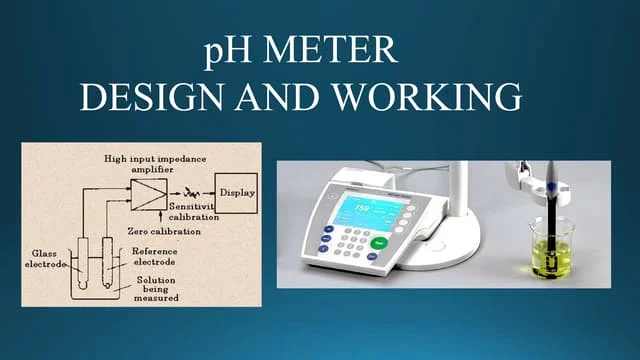Working Principle of pH Meter

Working Principle of a pH Meter
Definition
A pH meter is an analytical instrument used to measure the hydrogen ion concentration ([H⁺]) in a solution, expressing it as pH (potential of hydrogen).
Principle
-
A pH meter works on the electrochemical principle of measuring the electromotive force (EMF) between two electrodes:
-
Glass Electrode (measures H⁺ activity in the test solution)
-
Reference Electrode (provides a stable reference potential, e.g., silver/silver chloride electrode)
-
-
The EMF generated depends on the difference in hydrogen ion activity between the test solution and the reference electrode.
-
The meter uses the Nernst equation to convert this voltage into pH:
pH=Eref−Emeasured2.303×R×T/F\text{pH} = \frac{E_{\text{ref}} – E_{\text{measured}}}{2.303 \times R \times T / F}
Where:
-
R = Gas constant (8.314 J/mol·K)
-
T = Absolute temperature (K)
-
F = Faraday’s constant (96485 C/mol)
At 25°C, the slope is approximately 59.16 mV per pH unit.
Working Steps
-
Calibration using standard buffer solutions (e.g., pH 4.00, 7.00, 10.00).
-
Immersion of the electrode system into the sample solution.
-
Measurement of EMF generated due to H⁺ concentration difference.
-
Display of pH value on the meter after electronic conversion.
Key Points for Accurate pH Measurement
-
Keep the glass electrode hydrated (store in KCl solution, not distilled water).
-
Avoid contamination of buffers and samples.
-
Calibrate regularly (especially before critical measurements).
-
Compensate for temperature effects (automatic or manual).

